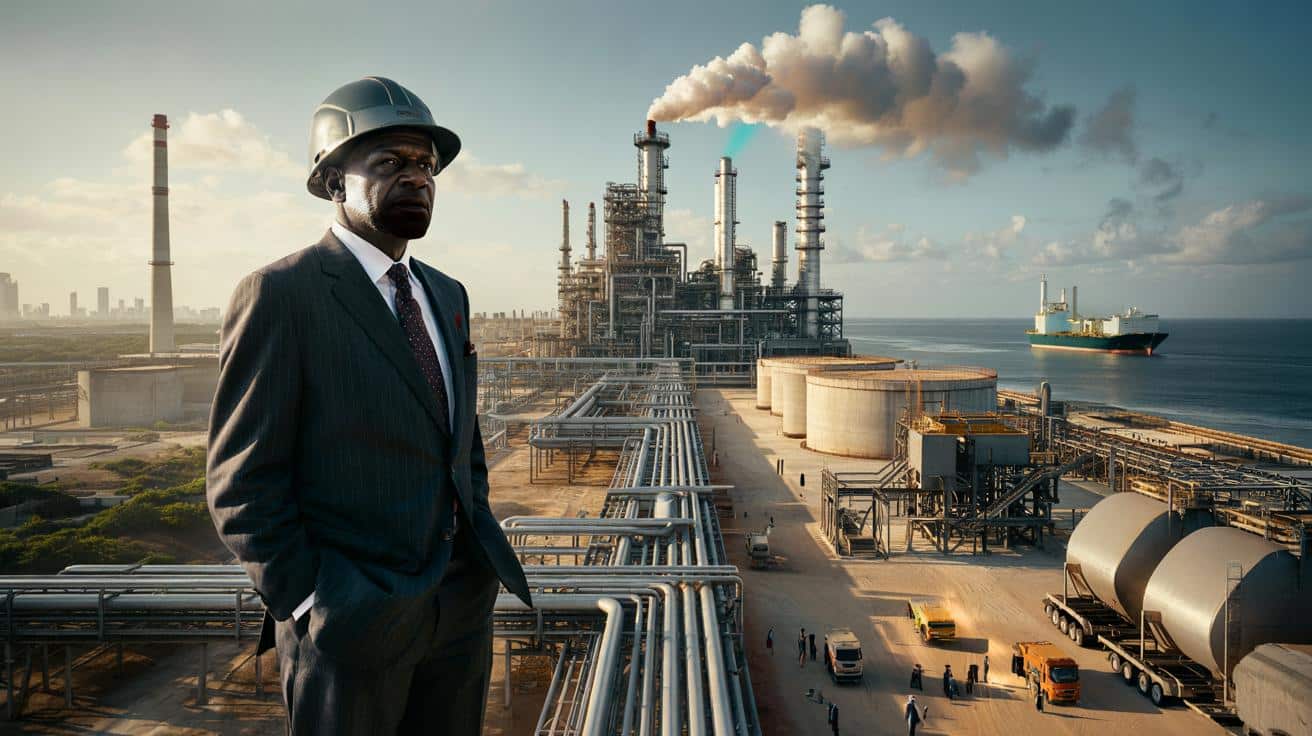The world’s attention has swung back to Lagos, where Aliko Dangote’s sprawling empire in cement and refining has shifted the balance of fortunes. A fresh calculation on global wealth rankings now captures the scale of that shift and what it signals for African industry.
A record that reframes African wealth
Aliko Dangote has reached an estimated net worth of $30.3 billion, placing him at a rarefied tier of global billionaires and setting a new high-water mark for Africa. The valuation, compiled by the Bloomberg Billionaires Index, reflects a year-to-date gain of more than $2 billion, with a recent uplift of around $430 million nudging him across the symbolic $30 billion line.
First African above $30 billion, with net worth now assessed at $30.3 billion after a year-to-date rise of $2.16 billion.
The surge draws from two strong engines: a continent-spanning cement business and a fast-scaling oil refinery that has reshaped Nigeria’s fuel balance. Both arms are capital intensive, market moving, and increasingly intertwined with regional industrial policy.
Cement expansion strengthens gains
Dangote Cement remains the group’s earnings backbone. A freshly completed $160 million plant at Attingué, roughly 30 kilometres north of Abidjan in Côte d’Ivoire, adds three million metric tonnes per year. The site spans around 50 hectares and sits among Dangote Cement’s largest operations outside Nigeria.
Across the continent, the company now runs 11 production plants with an installed capacity of about 55 million tonnes annually. That footprint anchors pricing power in key markets and supplies fast-growing urban centres where infrastructure build-outs demand steady clinker and cement supply.
Eleven plants, ~55 million tonnes per year: an industrial base designed to feed Africa’s next building cycle.
This bet leans on sustained demand from West Africa’s housing and infrastructure needs, and on cross-border trade that benefits from regional integration frameworks. It also positions the group to navigate currency swings by producing closer to end users, reducing import reliance and logistics costs. Competition remains active, with regional producers contesting market share, but scale and integration tilt the balance.
Refinery operations accelerate the leap
The Dangote Oil Refinery, commissioned in 2023, has quickly become the other pillar of the valuation story. Initial runs focused on diesel and jet fuel. Output has since climbed to roughly 650,000 barrels per day, according to sector reporting, and supplied cargoes that helped reduce Nigeria’s dependence on imported products.
The company has flagged a plan to float between 5% and 10% of the refinery on the Nigerian Exchange within the next 12 months. A listing would test local capital-market appetite for large industrial equity, offer a valuation marker, and broaden ownership of a strategic national asset. The group has also outlined an ambition to lift capacity toward 1.4 million barrels per day over time.
From 370,000 to ~650,000 barrels per day today, with an aspirational 1.4 million barrels per day on the horizon.
If realised, that upper range would eclipse the published nameplate of India’s Jamnagar complex. The pathway there will hinge on consistent crude supply, reliable utilities, product slate optimisation, and clear domestic pricing signals. For Nigeria, sustained local refining could conserve foreign exchange, deepen supply chains, and create skilled jobs across operations, shipping, and maintenance.
What the numbers say
The past two years have seen sharp moves in Dangote’s assessed fortune. A refinery ramp-up phase coincided with a temporary dip in early 2024 before a quicker-than-expected rebound later that year and into 2025.
| Date | Approx. net worth (USD) | Context |
|---|---|---|
| Early 2024 | $9.5 billion | Refinery commissioning phase; market volatility |
| Late Jan 2024 | $20 billion | Manufacturing and energy gains lift valuation |
| Oct 2024 | $27.8 billion | Momentum builds across core assets |
| Aug 2025 | $29.3 billion | Steady climb as refinery output rises |
| Oct 2025 | $30.3 billion | First African assessed above $30 billion |
Drivers behind the climb
- New Ivorian plant adds three million tonnes a year, deepening West African scale.
- Refinery throughput ramps to roughly 650,000 barrels per day, with plans to list a stake.
- Portfolio benefits from regional demand for cement and refined products.
- Asset values tracked in dollars; currency moves and local pricing influence mark-to-market.
- Operational execution, logistics reliability, and energy costs shape margins across both divisions.
Why this matters for readers
For consumers in Nigeria and neighbours, more local refining can stabilise supply of diesel and jet fuel. Import bills could ease if domestic output reliably displaces foreign cargoes, supporting foreign-exchange reserves. Cement capacity near growth corridors can cut delivery distances, with potential to temper project delays and cost spikes.
For savers and investors, a potential refinery float on the NGX would be a landmark test for market depth. It could broaden local institutional participation, set benchmarks for future industrial listings, and expand the investable universe for pension funds. Bond markets may also pay attention if the group refinances at scale using public instruments.
Risks and open questions
Feedstock supply is pivotal. The refinery’s run rates depend on steady crude deliveries, competitive terms, and infrastructure security. Product pricing will need to align with import parity over time to sustain investments. Any policy shifts around subsidies or taxes could affect margins and cash flow.
In cement, energy costs, clinker logistics, and price competition will shape profitability. Cross-border sales rely on customs efficiency and currency convertibility. Environmental compliance across both businesses, including emissions and sulphur standards, will draw scrutiny from financiers and regulators.
What to watch next
Two milestones stand out. First, clarity on the refinery stake sale, including offer size, valuation range, and timetable. Second, evidence that the Ivorian plant hits its three-million-tonne run rate while keeping unit costs in line. Both signals would help markets judge the durability of today’s valuation.
$30.3 billion is a marker. The investment case now hinges on execution, cash conversion, and market access.
A quick back‑of‑the‑envelope exercise
Consider simple scenarios to frame scale, not forecasts. If a refinery runs at 650,000 barrels per day and earns an average gross margin of $8 per barrel across its slate, that’s $5.2 million in gross margin per day before operating costs, financing, and taxes. A $10 spread would imply $6.5 million per day. Real outcomes vary with crude discounts, product cracks, and utility costs.
For cement, a three-million-tonne plant earning $12 per tonne in EBITDA would contribute about $36 million a year; at $18 per tonne, roughly $54 million. Margins swing with kiln fuel prices, maintenance cycles, and market competition. These illustrations show how throughput and unit economics translate into enterprise value over time.
Context for families and small businesses
Transport firms and farmers track diesel availability and prices closely. Stable domestic supply can reduce delivery uncertainty and improve planning. Builders and hardware retailers watch cement availability ahead of peak construction months. Shorter lead times and fewer stockouts help projects stay on budget.
For graduates and skilled workers, large industrial sites demand engineers, technicians, safety professionals, and logistics specialists. Apprenticeships and vendor programmes often follow when production stabilises. Communities near plants benefit when suppliers of aggregates, packaging, and services gain predictable orders.








Historic for Africa—$30.3bn and counting. If Dangote lists 5–10% of the refinery on NGX, do retail investors even get a fair bite, or will institutions swallow the book?
650,000 barrels/day sounds massive, but can feedstock be secured consistently without subsidy whiplash? Nigeria’s policy zig‑zags have burned operators befoer.